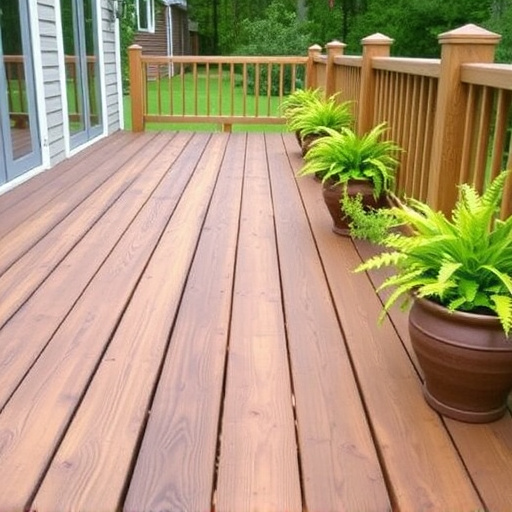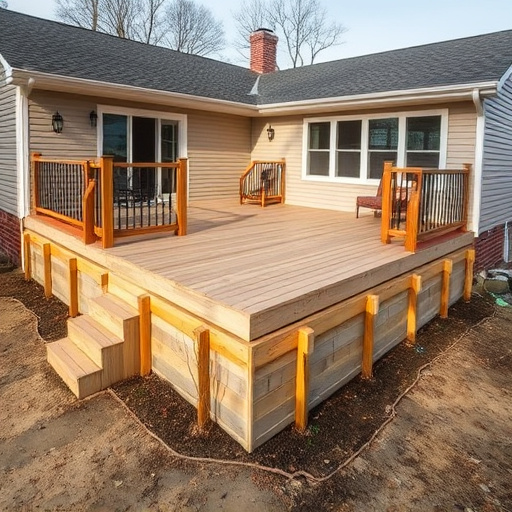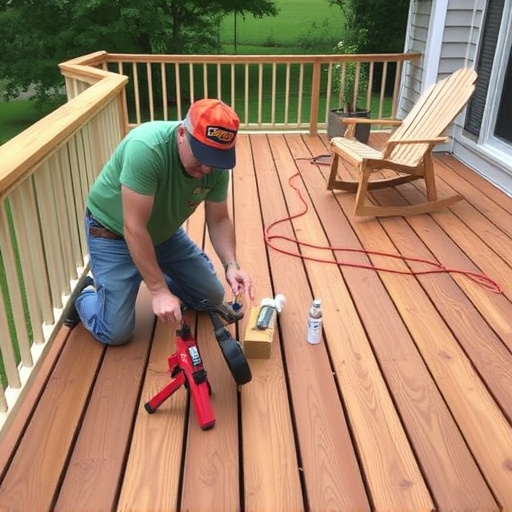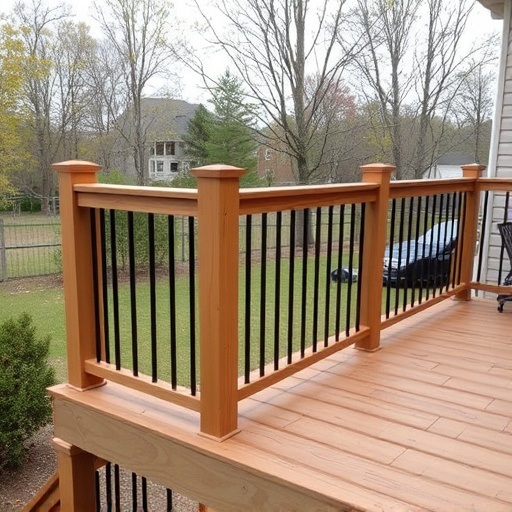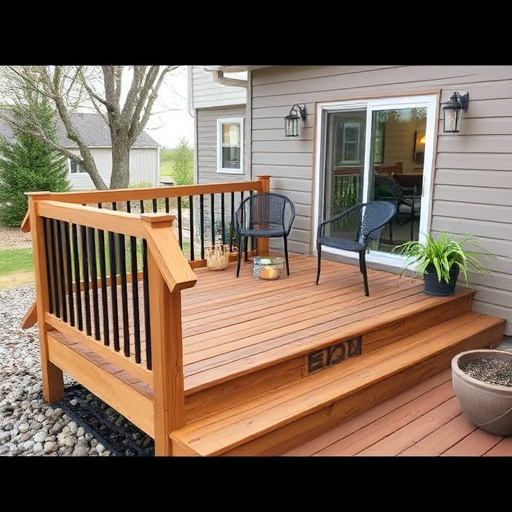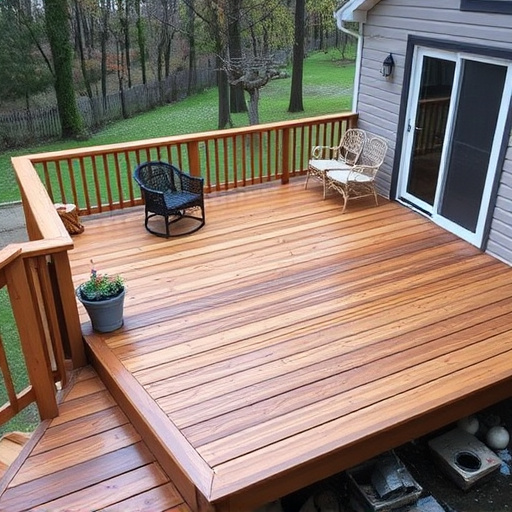Deck sealing is a crucial process for maintaining and protecting wooden decks, preventing rot, structural damage, and debris ingress by creating a water-resistant barrier. Optimal sealing conditions involve clear skies, moderate temperatures, minimal precipitation, humidity, or wind. Planning sealing during the post-spring frost to pre-autumn's first hard freeze window ensures long-lasting protection for both residential and commercial decks. Professional roofing services offer expert advice, repairs, and suitable preparation for enhanced durability, aesthetics, and structural integrity.
“Looking to transform your outdoor space? Deck sealing is a game-changer, offering both aesthetic enhancement and protective layers. But when is the best time to tackle this project? This guide explores the optimal timing for deck sealing, aligning with weather patterns for superior results. We’ll navigate through planning tips, ensuring efficiency and a long-lasting finish. From understanding the benefits to considering seasonal factors, get ready to seal your deck like a pro!”
- Understanding Deck Sealing and Its Benefits
- Weather Considerations for Optimal Results
- Planning Tips for Efficient Deck Sealing Projects
Understanding Deck Sealing and Its Benefits
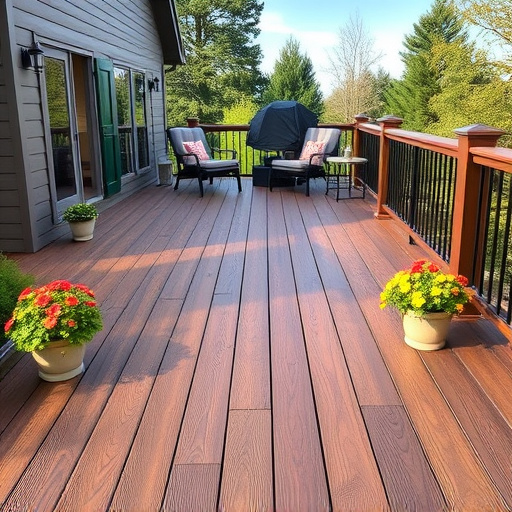
Deck sealing is a crucial process that protects your wooden deck from the elements, enhancing its longevity and aesthetic appeal. By creating a protective barrier, it prevents water absorption, which can cause rot and weaken the structure over time. This method also fills in cracks and crevices, stopping debris and moisture from seeping in and damaging the wood.
Regularly sealing your deck offers numerous benefits, including improved durability, reduced maintenance costs, and enhanced curb appeal for your home. It’s an investment that can save you money in the long run, especially when compared to the cost of extensive roof repair or professional siding replacement.
Weather Considerations for Optimal Results
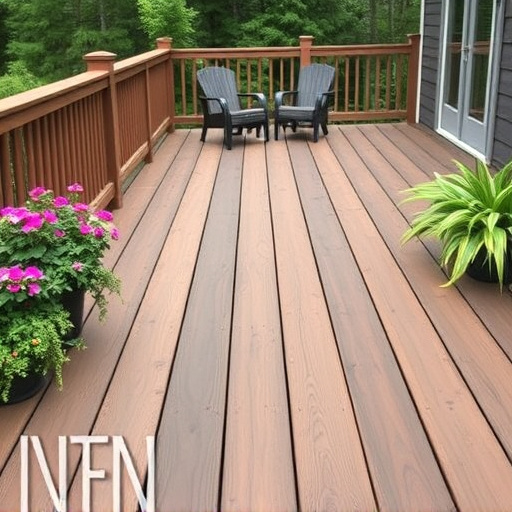
When planning a deck sealing project, understanding weather considerations is crucial for achieving optimal results. The ideal conditions for deck sealing typically involve clear skies and moderate temperatures. Avoid sealing when it’s extremely hot or cold as extreme temperatures can affect the cure time of the sealant. For instance, during hot summer days, sealants may dry too quickly, leaving behind spots that don’t fully protect your deck. Conversely, freezing temperatures in winter can slow down the curing process, potentially leading to an uneven finish.
In addition to temperature, precipitation and humidity levels play a significant role. Heavy rainfall or high humidity after sealing can dilute the sealant’s effectiveness. Wind is another factor; strong gusts can dislodge the sealant before it has a chance to bond properly with the deck surface. For best results, schedule your deck sealing project during periods of minimal rain and low humidity. This ensures that the sealant adheres well, providing long-lasting protection for your deck, much like how commercial siding installation or replacement benefits from optimal weather conditions to guarantee durability.
Planning Tips for Efficient Deck Sealing Projects

When planning a deck sealing project, timing is key to ensure optimal results. The ideal window for this task typically falls after the final spring frost and before the first hard freeze of autumn. This period allows the deck to dry thoroughly following any remaining seasonal moisture. Proper preparation begins with assessing the existing state of your deck, taking into account factors like age, material type, and previous sealing efforts.
For efficient project execution, consider enlisting professional roofing services for expert advice tailored to your specific needs. Commercial roofing experts can help determine if repairs or additional treatments are required before sealing. This proactive approach ensures a durable, long-lasting seal that protects your deck from the elements, enhancing its overall aesthetics and structural integrity, whether for residential or commercial properties.
When planning your next deck sealing project, consider the optimal weather conditions and thoughtful preparation. By understanding the benefits of deck sealing and implementing efficient planning tips, you can ensure a successful and long-lasting result. Remember, the ideal time for these projects is when the weather is dry and clear, allowing for quick drying and cure times. With the right timing and thoroughness, your deck will be sealed, protected, and ready to enjoy for years to come.








